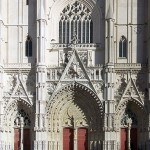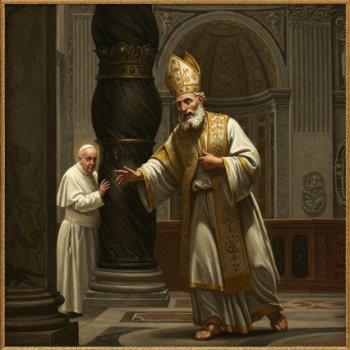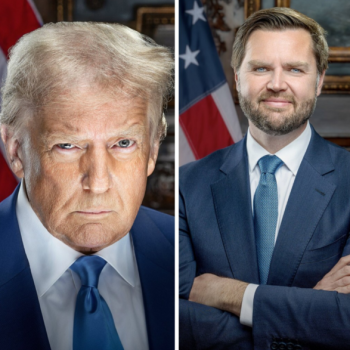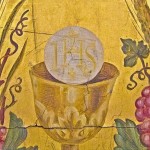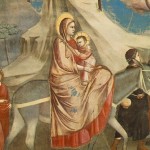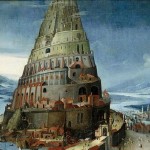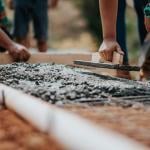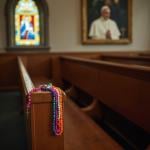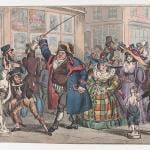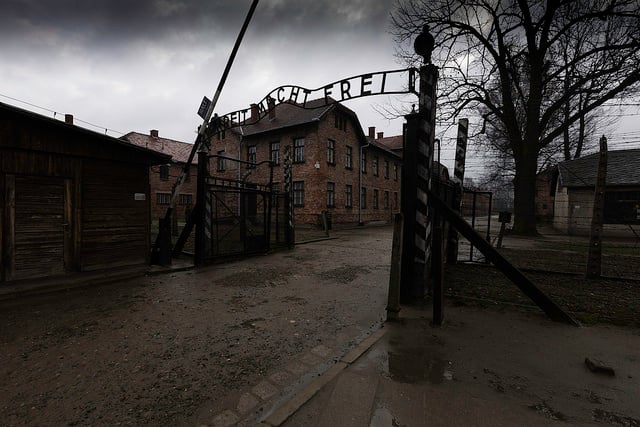
There’s plenty of talk about Francis’s silence during his visit to Auschwitz last week.
This picture of the silent pope is reinforced by the video footage of his visit where he is seen walking quietly through the camp, mutely but generously greeting camp survivors, and spending some time in contemplation in St. Maximillian Kolbe’s starvation cell.
Even though the pope did not make a speech in the Auschwitz death camp, which he gets credit for from some corners, he did not remain totally silent.
He actually spoke about Auschwitz in Krakow from the now famous papal window at the Bishop’s Palace, right across the street from the Franciscan church were I got married. This is where it gets interesting, because nobody seems to have noticed how much he deconstructed our common understanding of Auschwitz.
The following statements on this topic are taken from a CNA report on it:
Speaking form the balcony of the bishop’s palace in Krakow, Pope Francis told youth gathered below that the horror lived by prisoners in the Auschwitz extermination camp isn’t over, but still continues in those who suffer various forms of cruelty today.
“I don’t want to make you bitter, but I have to tell the truth. The cruelty of Auschwitz and Birkenau has not ended. Even today many people are tortured,” the Pope said July 29.
Many prisoners, he said, “are tortured immediately, in order to make them talk. Today there are men and women in overcrowded prisons. They live like animals. This cruelty is there today.”
He spoke at the close of his second full day in Poland, where he is spending July 27-31 for World Youth Day. He’s appearing on the balcony of the archbishop’s palace each night after he returns in order to address the crowd of youth gathered below.
Such a reading of Auschwitz and the Holocaust departs from the current intellectual orthodoxy, which sees both the camp and the historical murder of Jews as unique and incomparable.
Yet, this view of Auschwitz is comparably recent. The final chapter of Tony Judt’s final book, Postwar: A History of Europe Since 1945, notes that the uniqueness thesis only became the prevailing view toward the mid 1980’s. Before that Western Europe was largely indifferent to the plight of the Jews in Nazi concentration camps and did not see their plight as either unique or universal.
However, the pope’s reading of the Holocaust goes outside the intellectually orthodox readings of Auschwitz by leaning heavily upon Christology:
In his speech to youth at the balcony window, Pope Francis noted how they are closed the day uniting to the suffering Jesus. However, Jesus didn’t just suffer 2,000 years ago, but “he suffers today,” the Pope said.
There are many people who suffer, including “the sick the homeless, the hungry, those who are doubtful in life, who don’t feel happiness or salvation, or who feel the weight of their own sin,” he said, noting that Jesus also suffers in the sick children he visited at the hospital earlier in the day.
“Jesus also suffers there, in many children…and that question always comes to mind: why do children suffer? There are no answers for these things.”
Francis then reflected on his visit to Auschwitz and Birkenau, where there was so much pain and “cruelty,” asking “is it possible that us men, created in God’s image, are capable of doing these things?”
The same cruelty exists today, he said, explaining that this can be seen wherever there is war. “In many places in the world, where there is war the same thing happens,” he said.
This might be seen as Christian theological colonialism by some, although Francis, luckily, gets a free pass on many controversial statements.
The most productive reading of these words from Francis would see them in light of the common Christian and Jewish hope for the coming Messiah. For example, take a look at the following anecdote about Martin Buber from Elie Wiesel’s All Rivers Run to the Sea . . .

